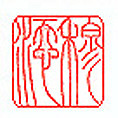from this page you can print the
whole section, without illustrations,
hypertext references or navigation
tools
go on
— go back to the guide

As a young lecturer, I was elected Sub-Dean of the Faculty of Arts in the University of Birmingham (UK). The Dean was J.G. Davies, professor of theology, interested in ecclesiastical architecture and ritual and relations between religious and revolutionary movements, to give some examples. He became my mentor and my friend. Gordon was the best chairman I have known in a long career of attending (and frequently myself chairing) meetings of University committees in different parts of the world, since he was able to combine a scrupulous fairness in allowing any point of view to be heard with a remarkable efficiency in getting the business done quickly and more often than not by agreement.
I soon discovered something anomalous. The Arts Faculty had a Common Room where teaching colleagues (but not students) often gathered in the morning for coffee and in the afternoon for tea. These refreshments were prepared by the ‘tea-ladies’, as they were known. They were paid as cleaners by the University, but would by turns take a break from these duties to prepare our tea and coffee. They were almost invariably courteous and cheerful, though by no means submissive.
And I found that there was something called the ‘tea-fund’, which was usually in a healthy financial condition, since the prices of refreshments were pitched to guard against any deficit, so that necessary supplies could be purchased. This fund seemed to be entirely outside the usual accounting procedures of the University, and I found that as sub-dean I had control of it.
I arranged with a supplier to deliver plates of good cakes and pastries each day. This proved to be a welcome innovation. It also tended to increment the fund. Then I began to organize periodic exhibitions of art in the room. The fund was able to support a visit by the artist, and some wine for those attending the opening. Sometimes, we were also able to purchase a painting from the fund, to embellish the common room.
It was in that room, around 1968, that a colleague from the Geography Department told me about plate tectonics. It was when this theory and terminology were gathering increasing acceptance. I remember feeling somewhat sceptical at first. It sounded to me like an outlandish idea, that the continents of the earth should be floating on these moving plates, deep underground. Indeed, I believe that not a few geologists themselves remained sceptical about the idea for quite a time. But I remember more clearly the enthusiasm of my friend (whose identity I have forgotten), his eyes shining as he explained to a lay person what a great breakthrough was being achieved.
Today, I think, everyone takes this discovery for granted, and it explains, for instance, the disastrous tsunami of December 2004. Several tectonic plates off Java moved against each other, causing enormous bursts of energy through the sea, which in turn caused the catastrophes which ensued when the resulting wave hit shore-lines and became walls of water. For footage of the Japan tsunami in 2011, click here.
I have the impression that it was shortly after I ceased to be sub-dean that the University administration spotted the anomaly of the Arts Faculty’s tea-fund, which was made possible by the cleaners doing some work other than what the University was really paying them for, by turning into tea-ladies, and which gave an unsupervised power over a bank account to a mere sub-dean. (I am not sure of this, since I never knew the terms of employment of these ladies.) Possibly the customary practice was then brought to an end. This would not have been unreasonable, though without it I might not have learnt anything about geology, nor met the artists who brought their paintings for our inspection and often enough our pleasure. And we might just have had a few prints on the walls of our common room, instead of the original paintings which we were sometimes able to buy.
from this page you can print the
whole section, without illustrations,
hypertext references or navigation
tools
go on
— go back to the guide
